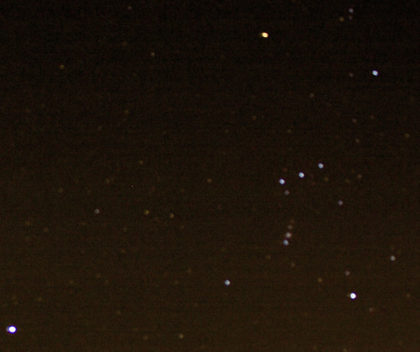
 )
)As the church calendar transitions to Epiphany and we remember the journey of the Magi, it is hard to ignore the contemporary parallels as many of our learned men and women find themselves captivated by one particular star. This time around, the fuss is over Betelgeuse, one of the shoulders in the constellation Orion and one of the brightest stars in the night sky. Betelgeuse is a variable star, meaning that its brightness waxes and wanes, but it has attracted attention because it has dimmed to its faintest appearance on record. No one knows why, although the most exciting possibility is that it will soon go supernova and explode. Not every star is big enough to end up as a supernova; Betelgeuse is the closest one that could. It is so large (wider across than the orbit of Mars) and so close that the explosion would be visible in the daytime for weeks.
Betelgeuse would not be the first supernovae in human history. Others were not as close, and so not necessarily visible in the daytime. Instead, they appeared in the night sky where no star had previously been observed, stayed for a few days or weeks, then vanished never to be seen again. It’s easy to imagine why such events would seem momentous and perhaps even portentous, especially before we had a model of star life cycles or indeed even a notion that stars could come and go. And when so much about life here on Earth is unpredictable and potentially devastating, it sure would be nice if someone was sending us messages in the stars to give us a heads up. Just because we can describe the physical mechanisms of stellar formation and supernovae, I suppose we can’t rule out deliberate communication via those mechanisms. But if that’s the case, the messages are pretty vague. A messenger would be much more helpful, someone who could deliver full sentences and even respond to questions, maybe over a meal or a fishing weekend.
While some, past or present, might look to the stars for the fortunes of kings and countries, what animates the astronomers is the uncertainty. Science education naturally focuses on communicating what has already been learned. But scientists themselves are in the business of learning what no one else already knows. So when something happens outside of the ordinary, it may very well signal an opportunity for science. Hence the excitement not just for a dimming star, but also for interstellar comets, fast radio bursts, and, o yeah, 96% of the observable universe.
Whether you follow the ups and downs of contemporary astronomy, I hope this new year brings you a new mystery or three to investigate.
Andy has worn many hats in his life. He knows this is a dreadfully clichéd notion, but since it is also literally true he uses it anyway. Among his current metaphorical hats: husband of one wife, father of two teenagers, reader of science fiction and science fact, enthusiast of contemporary symphonic music, and chief science officer. Previous metaphorical hats include: comp bio postdoc, molecular biology grad student, InterVarsity chapter president (that one came with a literal hat), music store clerk, house painter, and mosquito trapper. Among his more unique literal hats: British bobby, captain’s hats (of varying levels of authenticity) of several specific vessels, a deerstalker from 221B Baker St, and a railroad engineer’s cap. His monthly Science in Review is drawn from his weekly Science Corner posts — Wednesdays, 8am (Eastern) on the Emerging Scholars Network Blog. His book Faith across the Multiverse is available from Hendrickson.

Leave a Reply